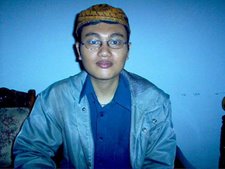perpus
tokobuah
allahuakbar
just put any comment on my blog
The learning style dimensions listed—Verbal/Visual, Intuitive/Sensory, Active/Reflective, Global/Sequential (Segmental)—come from the Felder-Silverman Learning Styles Model (FSLSM).
Richard M. Felder, a chemical engineering professor at North Carolina State University
Linda K. Silverman, an educational psychologist who contributed to the conceptual basis
1988, in their paper titled:
"Learning and Teaching Styles in Engineering Education" (Felder & Silverman, 1988)
The model was initially designed to improve engineering education but has since been widely applied in various educational contexts, including language learning and EFL settings.
It looks like you're listing different dimensions of learning styles. Here's a clearer breakdown and explanation of each pair to help organize your thoughts:
Verbal learners prefer written or spoken explanations. They learn best through words, reading, writing, and listening.
Visual learners prefer diagrams, charts, pictures, and other visual aids to understand and retain information.
Intuitive learners like to discover possibilities and relationships. They enjoy innovation, abstract thinking, and theoretical concepts.
Sensory learners prefer facts, data, and concrete information. They like practical applications and hands-on experiences.
Active learners retain information best by doing—discussing, applying, or explaining it to others.
Reflective learners prefer to think through the material quietly before acting. They learn by introspection and internal processing.
Global learners tend to learn in large jumps, absorbing material randomly before seeing the big picture. They often get sudden insights.
Sequential (Segmental) learners prefer linear steps and organized, logical progressions to understand material.
When you mention "learning style based on Silverman," you're most likely referring to Linda Silverman, an educational psychologist known for her work on visual-spatial and auditory-sequential learning styles. Her model is particularly influential in gifted education, though it applies more broadly to diverse learners.
Silverman proposed that learners typically fall along a continuum between two cognitive styles:
Think in images and pictures
Grasp the "big picture" but may struggle with details
Learn best through:
Diagrams, charts, videos
Hands-on activities
Mapping concepts
Often nonlinear thinkers and intuitive problem solvers
May find traditional teaching (step-by-step, auditory) challenging
Characteristics:
Strong imagination
Holistic thinking
Good at puzzles, spatial reasoning
May have difficulty expressing thoughts in words
Think in words and learn best through step-by-step instruction
Excel in traditional academic environments
Prefer:
Lectures, verbal instructions
Sequential tasks
Reading and writing
Are detail-oriented, analytical, and organized
Characteristics:
Linear thinkers
Good at remembering facts
Prefer routines and structure
Silverman emphasized the importance of adapting teaching methods to the learner's dominant style, rather than forcing all students to conform to a single approach. A mismatch between teaching and learning style can lead to underachievement or frustration, particularly for visual-spatial learners in auditory-sequential classrooms.
There are several kinds of learning styles that describe how individuals best absorb, process, and retain information. Here are the most commonly recognized types:
Learn best through images, diagrams, charts, and spatial understanding.
Prefer visual aids like mind maps, color-coded notes, and presentations.
Learn best through listening.
Prefer lectures, discussions, podcasts, and reading aloud.
Learn best through reading and writing.
Prefer written information such as textbooks, handouts, and taking notes.
Learn best through hands-on experience and movement.
Prefer doing, touching, building, role-playing, or using physical objects.
Learn best through reasoning, logic, and systems.
Prefer problem-solving, sequencing, and working with numbers or patterns.
Learn best through interaction with others.
Prefer group work, discussions, and collaborative activities.
Learn best alone.
Prefer self-study, reflection, and working independently.
Some frameworks (like VARK) focus more on the first four:
Visual
Aural
Read/Write
Kinesthetic
The first university in the world is widely considered to be the University of al-Qarawiyyin (also spelled Al-Karaouine), located in Fez, Morocco. It was founded in 859 CE by Fatima al-Fihri, a woman scholar and philanthropist.
Al-Qarawiyyin is recognized by UNESCO and the Guinness World Records as the oldest existing and continually operating degree-granting university in the world.
However, there are other contenders depending on how "university" is defined:
Nalanda University (India), established around the 5th century CE, was a major center of learning in ancient times, especially for Buddhist studies.
University of Bologna (Italy), founded in 1088, is often considered the oldest university in Europe and the first to use the term universitas for a community of teachers and scholars.
Today, the University of al-Qarawiyyin in Fez, Morocco, continues to function as both a religious and academic institution with a deep historical legacy. Here's a snapshot of its current status:
It primarily focuses on Islamic studies, including:
Islamic law (fiqh)
Theology
Classical Arabic grammar and linguistics
Hadith and Qur'anic studies
It also offers modern subjects such as mathematics, foreign languages, and astronomy in some programs.
Degrees from al-Qarawiyyin are recognized by Moroccan educational authorities.
The university is closely linked with the al-Qarawiyyin Mosque, which remains one of the most important places of worship and scholarship in the Islamic world.
It is a major center for Maliki jurisprudence (the dominant school of Sunni Islam in North and West Africa).
The library at al-Qarawiyyin, recently restored, is one of the oldest in the world and houses ancient manuscripts dating back over a thousand years.
The institution and its mosque are considered treasures of Islamic architecture and are protected heritage sites.
It attracts scholars and students from around the Islamic world, especially from West Africa, the Middle East, and other parts of North Africa.
It continues to be a symbol of female empowerment due to its founding by Fatima al-Fihri.
The first library in the world is generally considered to be the Library of Ashurbanipal, located in Nineveh (modern-day Iraq). It was established in the 7th century BCE by King Ashurbanipal of the Neo-Assyrian Empire.
Key facts about the Library of Ashurbanipal: Date: 7th century BCE (around 668–627 BCE).
Contents: Over 30,000 clay tablets written in cuneiform, including literature, religious texts, medical treatises, legal documents, and administrative records.
Languages: Mostly Akkadian and Sumerian.
Famous work: It contained the Epic of Gilgamesh, one of the oldest known literary works.
While earlier collections of texts existed (like temple archives in Sumer around 2600 BCE), the Library of Ashurbanipal is notable for being the first systematically organized library with a clear purpose of knowledge preservation.
The terms "UK" (United Kingdom) and "Great Britain" are often used interchangeably, but they actually refer to different things:
Full name: The United Kingdom of Great Britain and Northern Ireland
Includes:
England
Scotland
Wales
Northern Ireland
✅ This is the political entity — a country made up of four nations.
Refers to the island that includes:
England
Scotland
Wales
🚫 Does NOT include Northern Ireland
It's a geographical term, not a political one.
| Term | Includes | Type |
|---|---|---|
| UK | England, Scotland, Wales, N. Ireland | Political |
| Great Britain | England, Scotland, Wales | Geographical |
The competencies of elementary school teachers in the current era—often referred to as the "21st century" or the "digital era"—have expanded beyond traditional teaching skills. Today’s educators are expected to be adaptable, tech-savvy, and focused on holistic student development. Here’s a breakdown of key competencies for elementary school teachers in this era:
Mastery of subject matter and age-appropriate pedagogy
Ability to apply differentiated instruction to meet diverse learners' needs
Use of student-centered approaches (e.g., inquiry-based learning, project-based learning)
Integration of digital tools in teaching and assessment (e.g., using Google Classroom, interactive apps)
Basic troubleshooting and adaptation to new educational technologies
Promoting digital literacy among students
Clear, age-appropriate communication with students
Positive interaction with parents and school community
Collaboration with colleagues for interdisciplinary learning
Modeling good character and instilling values (honesty, responsibility, empathy)
Upholding ethical standards in teaching and student evaluation
Promoting inclusive and respectful classroom culture
Ability to analyze situations and make informed decisions
Encouraging students to think critically and ask questions
Reflecting on teaching practices for continuous improvement
Designing engaging and imaginative learning experiences
Encouraging students’ creativity and curiosity
Flexibility in adapting teaching methods
Commitment to continuous professional development
Staying updated with educational trends, curriculum changes, and pedagogy
Open to feedback and willing to learn from peers and experiences
Sensitivity to students’ diverse cultural backgrounds
Promoting global citizenship and cross-cultural understanding
Incorporating local and global issues in teaching




